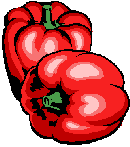.Com
Fruit Veg Fact
 |
 |
 |
 |
 |
|||
| HOME | FRUITS | VEGIES | KITCHEN |
SEASON |
FEEDBACK |
SEARCH |
|
|
.Com
|
|
|
DESCRIPTION |
A small shoot vegetable with a elongated white leaves wrapped tightly similar to a baby chinese cabbage. Bitter in flavour.
HISTORY AND ORIGIN |
Related to the Lettuce and Artichoke family. It was discovered in the mid 1800 in Belgium.
BUYING AND STORAGE |
Select fresh crisp heads of witlof with white cream leaves. Avoid signs of decaying or wilting and discolouration caused by light. Refrigerate witlof wrap in a paper towel away from light and will keep up to 3 days.
PREPARATION AND USE |
Wash and tear into small pieces. Serve raw in salads. Can be boil, steam or microwave.
NUTRITIONAL INFORMATION |
A good source of vitamin C and dietary fibre.
| MAJOR NUTRIENTS |
- SERVING SIZE: 100 grm
| * ENERGY: | 41 | kj | * IRON: | grm | |
| * PROTEIN: | 2 | grm | * POTASSIUM: | grm | |
| * FAT: | .2 | grm | * CALCIUM: | grm | |
| * CARBOHYDRATE: | .4 | grm | * VITAMIN A: | ug | |
| * DIETARY FIBRE: | 2 | grm | * VITAMIN B: | mg | |
| * SODIUM: | 76 | grm | * VITAMIN C: | 6 | mg |
VARIETY |
COMMON WHITE/RED/YELLOW WITLOF: A white base with the colour above on the outer edge of the leaves.
CURLY ENDIVE: Also known as Chicory. Very different from the Common Witlof has white curly leaves on the bottom and dark green leaves on top. The Chicory is a loose leaves vegetable.
RECIPE click here |
|
Send mail to fruitvegfact@iinet.net.au
with questions or comments about this web page.
|